If you were expecting some kind of sun sign nonsense, forget about it. This is real astrology for the real world, not some mystical mumbo-jumbo word salad. If it's real astrology for yourself that you want, you can get it by phone or in print. And if you need help deciphering the astrological glyphs in the graphics accompanying this article, see Astroglyphs: Astrological Symbols Guide. Please note: this forecast is expressed in terms of Universal Time (UT). Also please be aware that, while I never change a forecast once it's published, I do post errata to acknowledge typographical errors and the like.
The future will soon be a thing of the past.
-- George Carlin
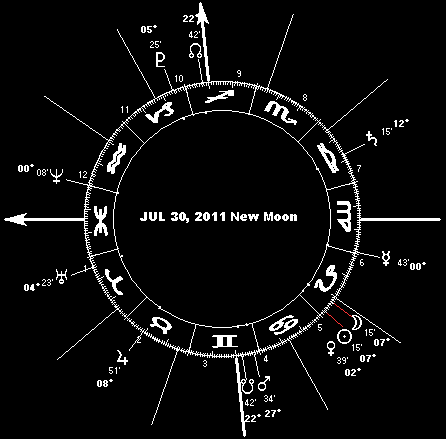 The septuple waxing Uranus-Pluto square of 2012-2015 shapes up to be one of the more significant celestial configurations of the next several years. The thing is, its already within just a few degrees of being exact has been, since the end of May this year (and throughout this month); and will continue to be so, on and off, until early 2017.
The septuple waxing Uranus-Pluto square of 2012-2015 shapes up to be one of the more significant celestial configurations of the next several years. The thing is, its already within just a few degrees of being exact has been, since the end of May this year (and throughout this month); and will continue to be so, on and off, until early 2017.
Uranus squares Pluto on an irregular cycle of 50-80 years or so (not counting repeats due to retrograde, which may occur in a series stretching out over a few years). The square aspect is an arc of 90° between two points, and can be either waxing (the faster point 90° ahead of the slower) or waning (the faster point 270° ahead of - i.e. 90° behind - the slower).
As detailed in a 3,000-year table of Uranus-Pluto squares I published a half dozen years ago, Uranus will be in a waxing square (90° arc) to Pluto thats exact on June 24 and September 19 2012, again on May 20 and November 1 2013, on April 21 and December 15 2014, and finally on March 17, 2015. This will be the first Uranus-Pluto square since the current cycle of these two planets began with their 1965-66 triple conjunction, which was within a few degrees of exact on and off from the summer of 1964 into the summer of 1967.
The 2012-2017 Uranus-Pluto square is the first such alignment of these two planets since the 1931-35 quintuple set. (See table for exact dates.) However, unlike the current series of waxing (90°) squares, the 1932-1934 series was waning (270° arc), with Uranus in Aries and Pluto in Cancer. It coincided with the confiscation of gold by Presidential decree in the US, and consequent devaluation of the dollar following several years of financial panic. The last time there was a waxing square of these two planets was the 1875-1878 series, which featured a 90° arc from Uranus in Leo to Pluto in Taurus. It was an alignment that heralded the establishment of the Reichsbank as central bank of a unified Germany after several years of financial panic there; and, in the US, the Department of the Treasury's Bureau of Engraving and Printing started printing all US currency (which had previously been printed by private bank note companies). We have to go back to the 549-551 CE quintuplet to find another set of Uranus-Pluto squares featuring Pluto in Capricorn. In that set, Uranus in Libra squared Pluto in Capricorn in the 549-550 alignments, before each planet advanced into the next sign (Scorpio and Aquarius respectively) for the last two alignments in 551.
If that mid-6th Century time frame sounds familiar, it may be because youve been reading my forecasts for the past half-dozen years or so. There was a whole rather rare sequence of planetary configurations at work in the middle of the 6th Century CE, which disappeared for some 1500 years and then only reappeared starting at the turn of the millennium in the last dozen years or so: déjà vu all over again, as Yogi put it. You can read up on it yourself in my annual forecasts from 2006 onwards or wait until I publish my 2012 highlights and put it all together there. For the moment, heres all you need to know: were in the midpoint of the adjustment phase between the Great Chronocrators of 2000 and 2020 the latter marking the emergence of the nascent New World Order thats been struggling to be born since the 1980 Chronocrator. Were in the transition between the Industrial Revolution of the earth sign Chronocrator series and the Virtual Revolution of the air sign series, and weve been living in the dawn of that new age since 1980.
The current adjustment phase is anchored by the Jupiter-Saturn opposition in effect on and off from spring 2010 into early 2012. Back in 2010, pundits, governments and central banks were telling us that a global economic recovery had begun. Dump trillions of dollars worth of cash into the global financial system, and theres bound to be an increase in economic activity for a while. All would be well, if that money were real; if it was a genuine store of value and a reliable medium of exchange. It is neither. Its not value at all. Its debt. Its all borrowed, and there comes a time when the line of credit gets cut off and the loans come due. The day of reckoning began under the aegis of the Jupiter-Saturn opposition component of the signature 2010 T-Square that ran from Jupiter and Uranus in Aries at one end of the sky to Saturn in Libra at the other, all squared up to Pluto in Capricorn. Those same components, although shifted, have been lingering in the sky on and off through 2011, and wont let go until next year.
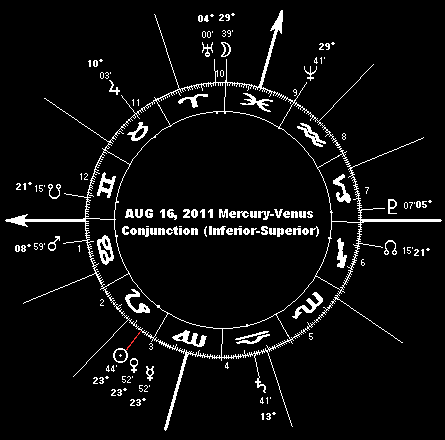 In and of itself, the Jupiter-Saturn opposition component of this configuration points to political and economic systems being forced to settle up and fix the failures of the status quo. Add in the social revolution component signified by the Saturn-Uranus opposition component, and the squares to Pluto from Jupiter, Saturn and Uranus, and youve got yourself an emergency fix. This isnt something that can be patched up, although thats the preferred approach of the powers that be. It fails because the hole thats been dug is too deep, and the desperation of the masses is beyond mere palliatives. Deep, thorough-going structural change emerges, like it or not. The heads of state who figure they can handle the crises that come upon us one after the other are mistaken. This isnt business as usual. Its like King Louis XVI asking if the storming of the Bastille was a revolt, only to be told "No, Sire, its a Revolution." (Which revolution, incidentally, followed in the wake the 1782-83 Saturn-Uranus oppositions and attendant volcanic eruptions and climate change. Sound familiar? Look at the headlines and the news.)
In and of itself, the Jupiter-Saturn opposition component of this configuration points to political and economic systems being forced to settle up and fix the failures of the status quo. Add in the social revolution component signified by the Saturn-Uranus opposition component, and the squares to Pluto from Jupiter, Saturn and Uranus, and youve got yourself an emergency fix. This isnt something that can be patched up, although thats the preferred approach of the powers that be. It fails because the hole thats been dug is too deep, and the desperation of the masses is beyond mere palliatives. Deep, thorough-going structural change emerges, like it or not. The heads of state who figure they can handle the crises that come upon us one after the other are mistaken. This isnt business as usual. Its like King Louis XVI asking if the storming of the Bastille was a revolt, only to be told "No, Sire, its a Revolution." (Which revolution, incidentally, followed in the wake the 1782-83 Saturn-Uranus oppositions and attendant volcanic eruptions and climate change. Sound familiar? Look at the headlines and the news.)
Ive covered the big picture element of these world-historic cycles in some detail in my annual forecasts over the last several years. For now, the focus is on August. Yes, July was a cliff-hanger, what with the Uranus-Pluto square being within degrees of exact all month. Likewise August and most particularly the several days either side of the full moon on the 13th. Its a period which features conjunctions of Mercury with Venus and the Sun on the 16th and 17th, all happening during the Mercury Max cycle (more about the latter in a moment). Meanwhile, Mars opposing Pluto on the 11th manages to tie Saturn into the Uranus-Pluto square and turn the whole thing into a Grand Cross. This Mars factor points to complications of the normal Red Planet variety: "belligerence, clashes personal and social (from assault to murder to riots in the street), military and paramilitary attacks (including terrorism), fires, crashes and explosions." Mars is similarly emphasized several days either side of the 17th (crossing the degree of the July 1 solar eclipse), and the 24th (Mars opposing the January 24 solar eclipse point).
Mid-August bears close watching for lots of reasons. In addition to those just mentioned, August 16, 2011 brings the next rarest type of Mercury-Venus conjunction, with Mercury inferior (between Earth and Sol) and Venus superior (on the other side of the Sun). As detailed in my 2011 World Forecast Highlights (published last year), an inferior-superior Mercury-Venus conjunction is often a triple alignment, like this one: a Sun-Mercury-Venus conjunction. When not actually conjunct Sol, the inferior-superior Mercury-Venus conjunction is never far from the solar disk, because Mercury's retrograde always takes place fairly close to the Sun's apparent position. (In any case Mercury is never more than about 28 degrees from Sol as seen from Earth.) The inferior Mercury-superior Venus conjunction with the Sun is therefore typically invisible in our skies, because from our perspective the two inner planets get lost in the glare of our parent star. The last inferior-superior Mercury-Venus conjunction (Mercury inferior and retrograde, Venus superior and direct) occurred on January 5, 2010. There wont be another until March 6, 2013. (The two inner planets almost make a superior-superior conjunction in early November this year, pulling to within a fraction of a degree before slowly separating. Theyll look conjunct, but they wont actually be . . . still, a beautiful sight in the evening sky.)
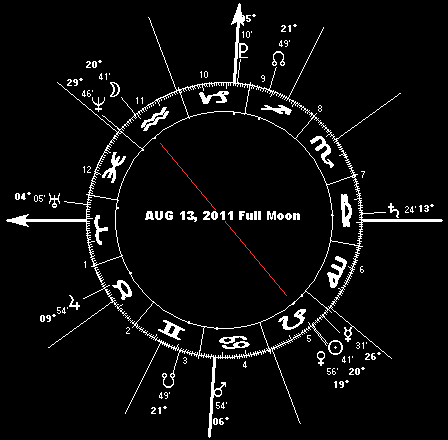 Look for increased solar and geomagnetic activity (including auroral displays) during any Mercury-Venus alignment, and particularly any with one or both planets retrograde (i.e. in their Max Cycle, putting them on the same side of the Sun as our home planet) like the one on August 16, which features a Mercury Max (though not a Venus Max). On the geophysical level, this is very likely to be a harbinger of increased storm and seismic activity; particularly if reinforced by a new or full moon. Thats exactly what happens in the case of the August 16 alignment, in which case theres a full moon just three days before occurring with the Sun, Mercury and Venus all within a few degrees or so, and on the very day that the Moon makes its northward crossing of the celestial equator.
Look for increased solar and geomagnetic activity (including auroral displays) during any Mercury-Venus alignment, and particularly any with one or both planets retrograde (i.e. in their Max Cycle, putting them on the same side of the Sun as our home planet) like the one on August 16, which features a Mercury Max (though not a Venus Max). On the geophysical level, this is very likely to be a harbinger of increased storm and seismic activity; particularly if reinforced by a new or full moon. Thats exactly what happens in the case of the August 16 alignment, in which case theres a full moon just three days before occurring with the Sun, Mercury and Venus all within a few degrees or so, and on the very day that the Moon makes its northward crossing of the celestial equator.
The August 16 triple conjunction looks like a pointer to disturbances in the world financial markets, due either to the latest debt crisis outbreak or to military/paramilitary conflict (including terror atrocities) or civil strife (riots etc.). It coincides with a Mars-Pluto opposition, turned into a T-Square by Saturn. The Sun-Mercury-Venus conjunction opposes Neptune, while the Moon is conjunct Uranus at the time. Debt defaults, public welfare cutbacks and revelations about fraud in the markets and financial system are all likely to be in the mix, and could trigger enough outrage to send people to the barricades. It wouldnt be the first time this year, and it wont be the last.
I expect that well see an elevated level of geocosmic disturbances within a few days either way of Mercury-Venus conjunction of August 16 a rash of headline-making storms with high winds, heavy precipitation and lots of lightning, and to a lesser extent an upsurge in moderate-to-severe seismic activity including magnitude 5+ quakes and volcanic eruptions. With Mercury in its Max phase (and retrograde to boot) for the August 16 alignment as well, breakdowns affecting communication and transportation systems and other infrastructure, whether due to force majeure (e.g. severe weather) or accidents or even nefarious activity, can have very wide implications at times like these with effects reaching out into financial markets and the broader economy. These are times to stay alert and focused, to concentrate, to keep your eye on the ball lest it smack you between the eyes. And then, tying it all into a Grand Cross configuration with Saturn and the Uranus-Pluto square, this whole mid-August period looks pretty tangled. Not end of the world messy, mind you, but still a time when an abundance of clarity and caution could do a person a world of good if only by steering a body clear of a world of hurt.
Another, though far more common, planetary cycle that lasts throughout August is the above-mentioned Mercury Max that began back on July 20, when the little planet reached maximum elongation east of the Sun. Its a cycle that continues through the August 3-26 retrograde and the August 17 inferior conjunction, ending with Mercurys maximum western elongation on September 3.
Being closest to the Sun, Mercury goes between Earth and Sun more than any other planet; several times a year in fact, including the infamous Mercury retrogrades of astrological legend. While most astrologers pay a fair amount of attention to Mercury's retrograde, few realize that it's only a part of the more fundamental intersolar phase in the orbital interaction between Mercury and Earth, as they both orbit around the Sun.
 The Mercury Max phase begins when the little Sun-grazer reaches its maximum elongation east of the Sun - its evening star phase. This happens when Mercury has come 'round to the same side of the Sun as Planet Earth, and is relatively near us. The little planet is then pulling up to pass Earth on the inside track, as it were; catching up to us from behind and then passing between us and the Sun. (This catching up is in fact the cause of the so-called Mercury retrograde.) Just as it catches up with us, Mercury passes directly between Earth and the Sun. This is Mercury's inferior conjunction with the Sun. (If the alignment is exact in right ascension and declination, the little dot that is Mercury is actually seen to transit across the face of the Sun.) After the inferior conjunction, Mercury continues pulling ahead of us until it reaches its greatest elongation west of the Sun (its morning star phase), at which point the little planet is headed toward the far side of our parent star. Between these two extremes, the greatest east and west elongations, comes the fabled Mercury retrograde period of astrological lore.
The Mercury Max phase begins when the little Sun-grazer reaches its maximum elongation east of the Sun - its evening star phase. This happens when Mercury has come 'round to the same side of the Sun as Planet Earth, and is relatively near us. The little planet is then pulling up to pass Earth on the inside track, as it were; catching up to us from behind and then passing between us and the Sun. (This catching up is in fact the cause of the so-called Mercury retrograde.) Just as it catches up with us, Mercury passes directly between Earth and the Sun. This is Mercury's inferior conjunction with the Sun. (If the alignment is exact in right ascension and declination, the little dot that is Mercury is actually seen to transit across the face of the Sun.) After the inferior conjunction, Mercury continues pulling ahead of us until it reaches its greatest elongation west of the Sun (its morning star phase), at which point the little planet is headed toward the far side of our parent star. Between these two extremes, the greatest east and west elongations, comes the fabled Mercury retrograde period of astrological lore.
Its worth noting that with the inferior planets (those inside Earths orbit; namely Mercury and Venus), the closest approach to Earth coincides with the inferior (retrograde) conjunction with the Sun. With the superior planets (those outside Earths orbit), the closest approach to Earth coincides with the planets (retrograde) solar opposition. Clearly astrological doctrine regarding planetary retrogrades is completely unthinking. Rather than being weakened or debilitated in some way, a retrograde planet is in fact bigger and brighter in our sky, and closer to our home planet. Not unlike a SuperMoon, in that respect . . . Accordingly, Mercury Max is a peak Mercury experience, with the little planet shining brighter than usual as the evening star at the beginning of the intersolar phase.
What I have termed the Mercury Max cycle is a way of putting the Earth-Sun-Mercury relationship into a perspective that reflects real-sky, observational astronomy; the dynamics of our solar system as seen from our home planet perch which is what astrology was, back in the time when it was astronomy. Look up in the sky over the indicated period, and you will see the phenomena described above. This perspective replaces the stilted, removed-from-reality practice of looking not at the sky, but at an ephemeris: first to see when Mercury comes to the degree at which it will later makes its direct station, and second when it reaches the degree at which it will later make its retrograde station; and then referring to the overlap between these two dates and the lesser included Mercury retrograde dates as the "shadow" and "storm" phases of the retrograde. (Some astrologers dont use the "storm" nomenclature, referring to the overlap at both ends of the retrograde as the "shadow" period.)
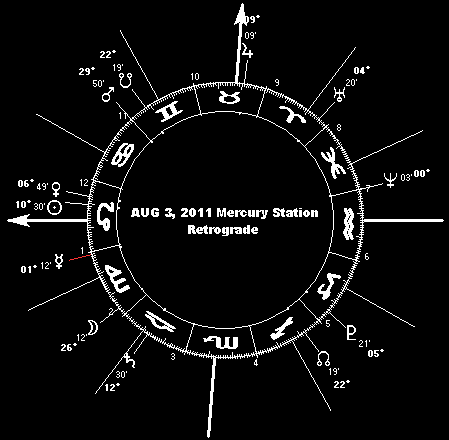 For example, the shadow period for the August 3-26, 2011 Mercury retrograde began on July 15 (the day Mercury reached the degree at which it goes direct on August 26) and ends (or the storm period ends, depending on nomenclature) on September 10 (the day Mercury returns to the degree at which it went retrograde on August 3). But in terms of any organic, visible manifestation in the skies of our home planet, these ephemeris-derived dates have no relevance to the Earth-Sun-Mercury dynamic. Its like left-brain versus right-brain thinking, linear versus holistic; nose in the book versus eyes on the skies. One is a made-up abstraction looked up in an ephemeris, the other a reality that can be seen in the sky. The corresponding organically derived dates in this case are July 20 (greatest eastern elongation) and September 3 (western elongation maximum). Occasionally the real Mercury Max begin and end dates will coincide with the artificial so-called shadow period start and stop dates. Even a broken clock is right twice a day. But the reality is there to see in the sky.
For example, the shadow period for the August 3-26, 2011 Mercury retrograde began on July 15 (the day Mercury reached the degree at which it goes direct on August 26) and ends (or the storm period ends, depending on nomenclature) on September 10 (the day Mercury returns to the degree at which it went retrograde on August 3). But in terms of any organic, visible manifestation in the skies of our home planet, these ephemeris-derived dates have no relevance to the Earth-Sun-Mercury dynamic. Its like left-brain versus right-brain thinking, linear versus holistic; nose in the book versus eyes on the skies. One is a made-up abstraction looked up in an ephemeris, the other a reality that can be seen in the sky. The corresponding organically derived dates in this case are July 20 (greatest eastern elongation) and September 3 (western elongation maximum). Occasionally the real Mercury Max begin and end dates will coincide with the artificial so-called shadow period start and stop dates. Even a broken clock is right twice a day. But the reality is there to see in the sky.
Retrograde means moving backwards. This is what Mercury appears to do in our skies when the little inner planet catches up on us and passes us on the inside, between Earth and the Sun. The reality of course is that Mercury never stops in its orbit, and never moves backward: this is only how the relative motions of Earth and Mercury around the Sun cause Mercury to move through our night sky.
Mercury retrograde is the cycle when everything goes wrong, to hear some astrologers tell it. The truth is not so simple-minded. All things Mercurial are crucial during the intersolar Mercury phase; infrastructure, commerce, information, communication and transport being prime examples. Absent careful investigation and planning, and conscientious follow-through, all such things are apt to go off track during these cycles. Mercury's intersolar (Max) phase is a time for focus, concentration, planning, follow-through and communication - all the qualities of the active and involved mind, in short. In case you haven't noticed, most people are not especially alert and focused most of the time. When this kind of sleepwalking runs into Mercury's intersolar cycle, with its focus on mental acuity, it doesn't take long for things to go awry.
Im confident that fear of the different (Mercury apparently moving backwards in the sky) gave rise to the paranoia about Mercury retrograde. This paranoia was fed down through the generations by the fact that most people are more or less, to use Gurdjieffs term, sleepwalking most of the time. Comes a time when real awareness and focus is called for, those sleepwalkers run into a virtual (sometimes literal) buzz saw. If you're sharp and focused and alert, you can avoid a certain amount of this mess. In fact, you can even prosper by concentrating on tasks that center on thought, planning and communication. But you'll still have to dodge all the chaos created by the people who are sleepwalking. Its like driving in city traffic full of bozos who are texting behind the wheel . . .
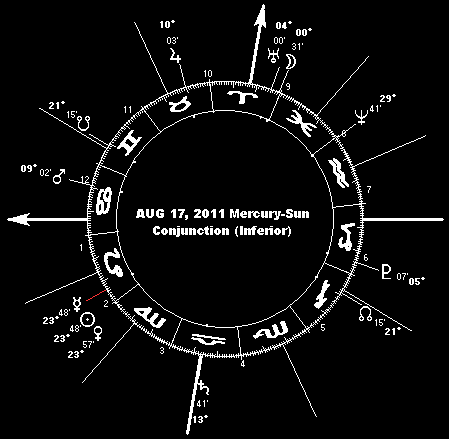 Among the sort of things to be ready for during this and Mercury Max: strikes and other disruptions affecting transportation and communication (e.g. postal, phone, mass transit, trucking, airline, shipping, dock and warehouse workers, teachers and all manner of media). Weather both terrestrial and solar (including geomagnetic storms, particularly during other planetary Max phases, most especially Venus, Mars and Jupiter) can play a part in the kind of breakdowns described here, but human effort (and sometimes malicious action) is a part of the mix as well. Power failures due to infrastructure breakdown and computer network disruptions caused by hacker attacks, software vulnerabilities and the like are also just a crossed wire or a keystroke away from a major mess at these times.
Among the sort of things to be ready for during this and Mercury Max: strikes and other disruptions affecting transportation and communication (e.g. postal, phone, mass transit, trucking, airline, shipping, dock and warehouse workers, teachers and all manner of media). Weather both terrestrial and solar (including geomagnetic storms, particularly during other planetary Max phases, most especially Venus, Mars and Jupiter) can play a part in the kind of breakdowns described here, but human effort (and sometimes malicious action) is a part of the mix as well. Power failures due to infrastructure breakdown and computer network disruptions caused by hacker attacks, software vulnerabilities and the like are also just a crossed wire or a keystroke away from a major mess at these times.
If I had to pick a day to have a backup generator all fueled up and ready to go, a contingency plan in place in case the scheduled or expected didn't come to pass, a day to be especially sharp and steady and focused - it would be during one of these Mercury cycles. Note these dates; be ready with a fallback plan just in case. It's not so much that disaster is destined to strike when Mercury is in its intersolar phase. Rather, it's that everything pertaining to Mercury becomes crucial; and unless it's treated as such, then it goes awry. More and more, we live in a "just in time" world - and if the slightest delay holds up just one single thing, then a whole process screeches to a halt. Unfortunately, few people keep their eye on the ball with any consistency and diligence. And that's the reason these Mercury cycles tend to turn into Murphy's Law festivals. Practically speaking, this means that having a "just in time" inventory of essentials is risky business at times like this. Don't say I didn't warn you!
While the above descriptions apply to the Mercury Max period as a whole, we can expect that extremes will be associated with particular milestones the little planet makes along the way, give or take a few days. Middle August is a good example, what with the aforementioned Mercury-Venus conjunction on the 16th, Venus making a superior conjunction with the Sun the same day, followed a few hours later by the inferior Mercury-Sun conjunction on the 17th. Early August is a bit sticky too, what with Mercury opposing Neptune at the new moon on the 30th (an alignment repeated on the 8th) and the Mercury retrograde station on the 3rd. And the end of August brings up Mercurys direction station on the 26th. (Early September has another peak, as the little planet reaches maximum western elongation on the 3rd.)
The current Mercury Max cycle is the penultimate one of 2011, by the way. The final such phase begins with the maximum eastern elongation on November 14, includes the November 24-December 14 retrograde and the December 4 inferior conjunction, and wraps up with the western elongation extreme on December 23, 2011.
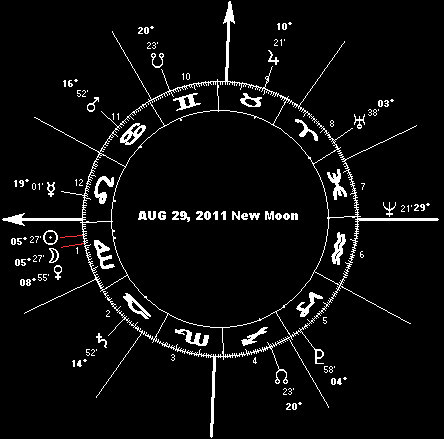 Ive already mentioned in passing some of the geocosmic stress windows for the month, times when headline-making severe storms (with high winds and heavy precipitation) and seismic activity (magnitude 5+ earthquakes and volcanic eruptions) tend to pile up. These will include the July 30 new moon, with a shock window that stretches from the 26th (the day before the north lunar declination peak on the 27th) into August 3rd (the day after the lunar perigee). Next comes the full moon period, which appears to be the most portentous time of the month. I make this as running from the 8th (in advance of the Moons south declination extreme) through the 17th (a day after the Moons northward crossing of the celestial equator). The 9th, 13th, 17th and 18th look most imposing in terms of storm and seismic risk during this period. And finally comes the 26th through the end of the month, centering on the August 29 new moon more emphatic than most, occurring in close proximity to the southward lunar equatorial crossing on the 29th and the lunar perigee on the 30th. This is almost a SuperMoon-class alignment, but we have to wait until the end of September before theres a genuine SuperMoon.
Ive already mentioned in passing some of the geocosmic stress windows for the month, times when headline-making severe storms (with high winds and heavy precipitation) and seismic activity (magnitude 5+ earthquakes and volcanic eruptions) tend to pile up. These will include the July 30 new moon, with a shock window that stretches from the 26th (the day before the north lunar declination peak on the 27th) into August 3rd (the day after the lunar perigee). Next comes the full moon period, which appears to be the most portentous time of the month. I make this as running from the 8th (in advance of the Moons south declination extreme) through the 17th (a day after the Moons northward crossing of the celestial equator). The 9th, 13th, 17th and 18th look most imposing in terms of storm and seismic risk during this period. And finally comes the 26th through the end of the month, centering on the August 29 new moon more emphatic than most, occurring in close proximity to the southward lunar equatorial crossing on the 29th and the lunar perigee on the 30th. This is almost a SuperMoon-class alignment, but we have to wait until the end of September before theres a genuine SuperMoon.
Bear in mind, with regard to the above risk windows, that were dealing with phenomena that are planetary in scale. Consequently, the risks are planet-wide. Obviously theres not going to be a major earthquake outside of an already known seismic risk zone; nor an eruption where theres no volcano; nor a tsunami on dry land. But the sky covers the whole of planet earth, and therefore so does the storm risk. These things being allowed, there are nonetheless a few somewhat suspicious-looking target zones for the celestial alignments of August. With regard to the July 26-August 3 risk period centered on the July 30 new moon, for example, theres a longitudinal zone right through the middle of North America and into the Pacific; emerging on the other side of the world to run through India, Nepal, western China, Kazakhstan and Russia. Another longitudinal zone runs through western Europe and Africa to emerge on the other side of the planet from New Zealand northward through the South Pacific, and across northern Japan and easternmost Siberia. Ive also got my eye on some horizon arcs over eastern Mexico and the Gulf, northeasterly through Chicago and Canada, across the North Atlantic to arc southwesterly through western Russia, Kazakhstan, Uzbekistan, Kyrgyzstan, Afghanistan, Pakistan and India; and finally theres another horizon arc sweeping through northwest Africa across the western Mediterranean Sea into central Europe, and from there across the northern edge of Eurasia down across northern Japan and down through the Pacific Ocean (passing north of New Zealand).
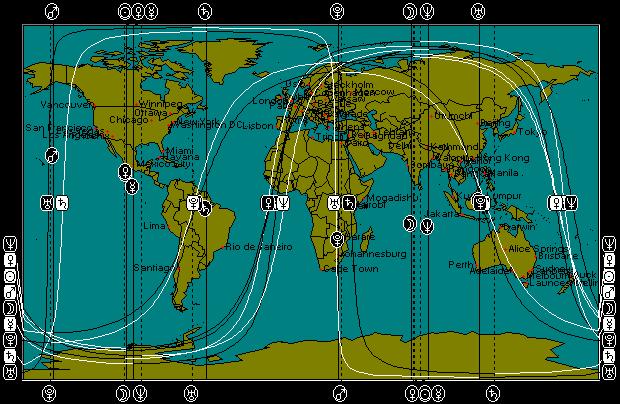 The mid-month full moon, as Ive said, looks like the biggest storm and seismic risk phase for all of August. The planet-wide nature of these things notwithstanding, I do see some potential regions of special vulnerability. These include a longitudinal zone through the middle of North America (roughly centered on a line from Winnipeg down through Mexico City), passing onto the other side of the planet from India through western China and central Russia. Theres a momentous looking horizon arc that includes the triple conjunction of Mercury and Venus with the Sun and sweeps across northwest Africa and over all of western Europe, before running along northernmost Eurasia and turning southeasterly across northern Japan and Kamchatka out into the South Pacific, passing right over New Zealand. And then theres eastern Europe, Turkey and Egypt (a Mars-Pluto line that touches Alaska and passes a little east of Hawaii on the other side of the world). Last but hardly least is the Mars-Pluto horizon arc from Chile northeasterly across South America to Iceland, bending eastward to cross Scandinavia before arcing southerly through Russia, Mongolia and China out into the Pacific to cross Indonesia and Australia. Remember: this is not only a pointer to stress in the crust and atmosphere of our home planet, but also the herald of intensification in the political, economic and financial spheres. If you cant short the euro in mid-August, its just not going to happen this year.
The mid-month full moon, as Ive said, looks like the biggest storm and seismic risk phase for all of August. The planet-wide nature of these things notwithstanding, I do see some potential regions of special vulnerability. These include a longitudinal zone through the middle of North America (roughly centered on a line from Winnipeg down through Mexico City), passing onto the other side of the planet from India through western China and central Russia. Theres a momentous looking horizon arc that includes the triple conjunction of Mercury and Venus with the Sun and sweeps across northwest Africa and over all of western Europe, before running along northernmost Eurasia and turning southeasterly across northern Japan and Kamchatka out into the South Pacific, passing right over New Zealand. And then theres eastern Europe, Turkey and Egypt (a Mars-Pluto line that touches Alaska and passes a little east of Hawaii on the other side of the world). Last but hardly least is the Mars-Pluto horizon arc from Chile northeasterly across South America to Iceland, bending eastward to cross Scandinavia before arcing southerly through Russia, Mongolia and China out into the Pacific to cross Indonesia and Australia. Remember: this is not only a pointer to stress in the crust and atmosphere of our home planet, but also the herald of intensification in the political, economic and financial spheres. If you cant short the euro in mid-August, its just not going to happen this year.
August wraps up with the dark of the moon on the 29th. This looks like more of a geophysical (storm and seismic) signal than a geopolitical pointer. While youre on the lookout for developments of this nature, you might want to keep an astro-locality eye on the US and Canadian Pacific coast, and on through western Canada, following the horizon arc that bends easterly across northern Greenland to plunge southeasterly through eastern Europe, the Middle East and Northeast Africa. Also keep a weather eye and seismic sense on alert for the longitudinal zone that runs from Rio de Janeiro in the New World and from Siberia and Japan down through Indonesia and Australia in the Old.
 SPECIAL FEATURE: This month's birthdays of the famous and infamous (with astrological birth charts)
SPECIAL FEATURE: This month's birthdays of the famous and infamous (with astrological birth charts)